Indigenous Governance Database
access to capital and credit
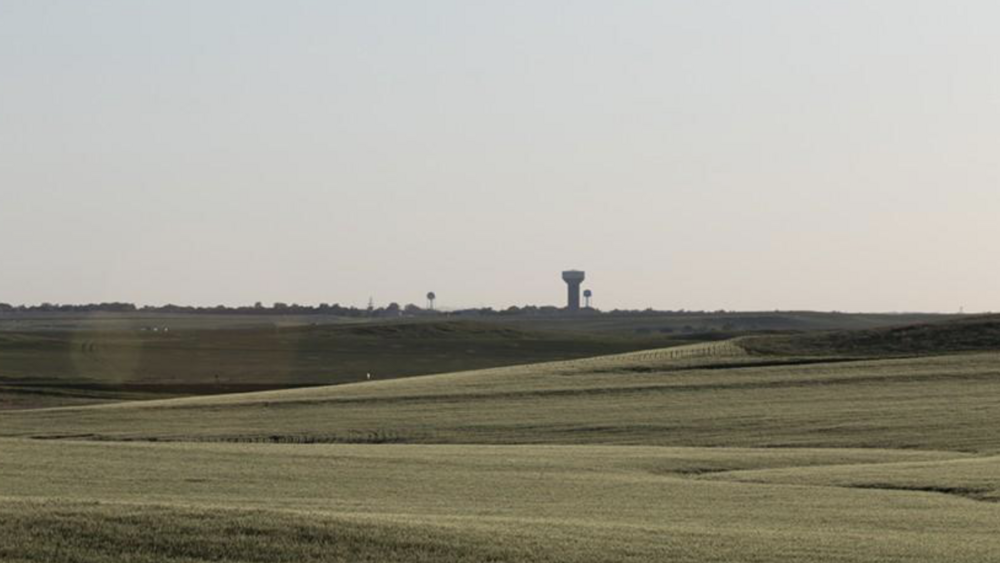
Bankshot Episode 46 Report: Ignored by banks, Indigenous communities build their own financial system
As seen from the air, the land is an expansive, grayish-brown terrain cracked open by the winding Missouri River with scattered clusters of black dots. On the ground, the dots become cows — so many cows — and the land becomes a roiling sea of prairie grass heaving under currents of wind you can see…
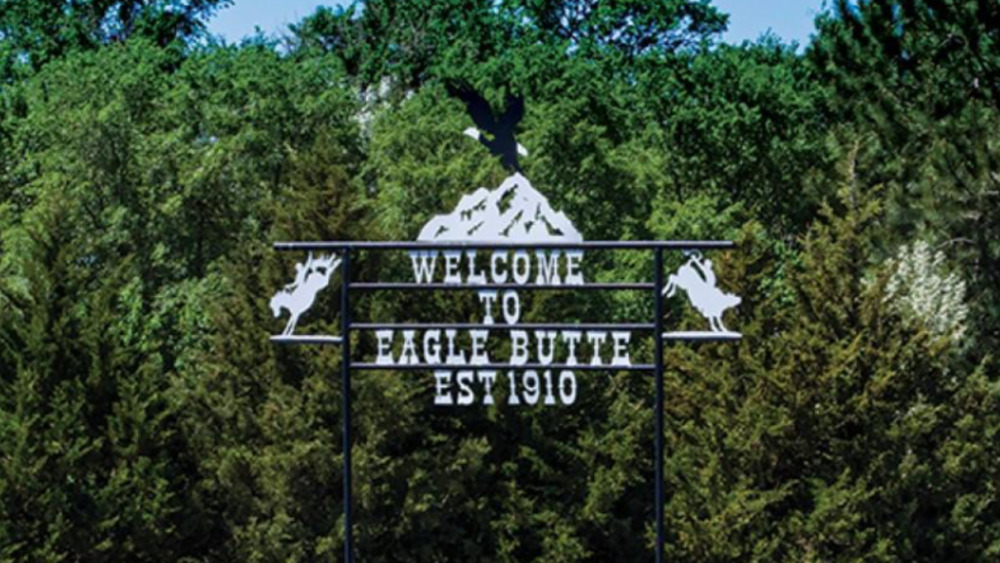
Bankshot Episode 46: Ignored by banks, Indigenous communities build their own financial system
EAGLE BUTTE, S.D. — The Cheyenne River Sioux Reservation is big, but it isn’t as big as it used to be. As seen from the air, the land is an expansive, grayish-brown terrain cracked open by the winding Missouri River with scattered clusters of black dots. On the ground, the dots become cows — so…
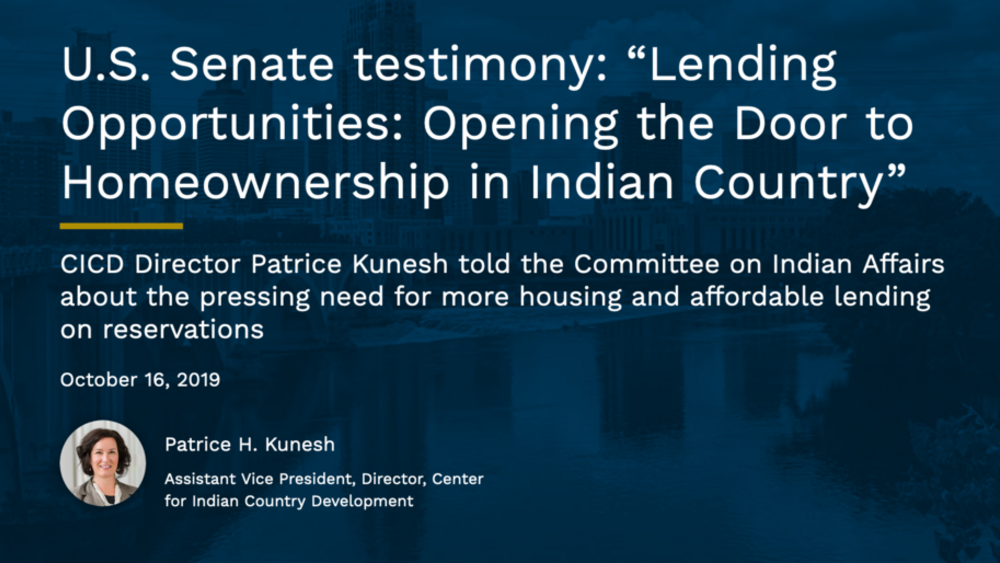
U.S. Senate testimony: “Lending Opportunities: Opening the Door to Homeownership in Indian Country”
On Oct. 16, 2019, Center for Indian Country Development Director and Minneapolis Fed Assistant Vice President Patrice H. Kunesh testified before the U.S. Senate’s Indian Affairs Committee about the need for more housing and improved access to affordable lending on reservations. She said that “…
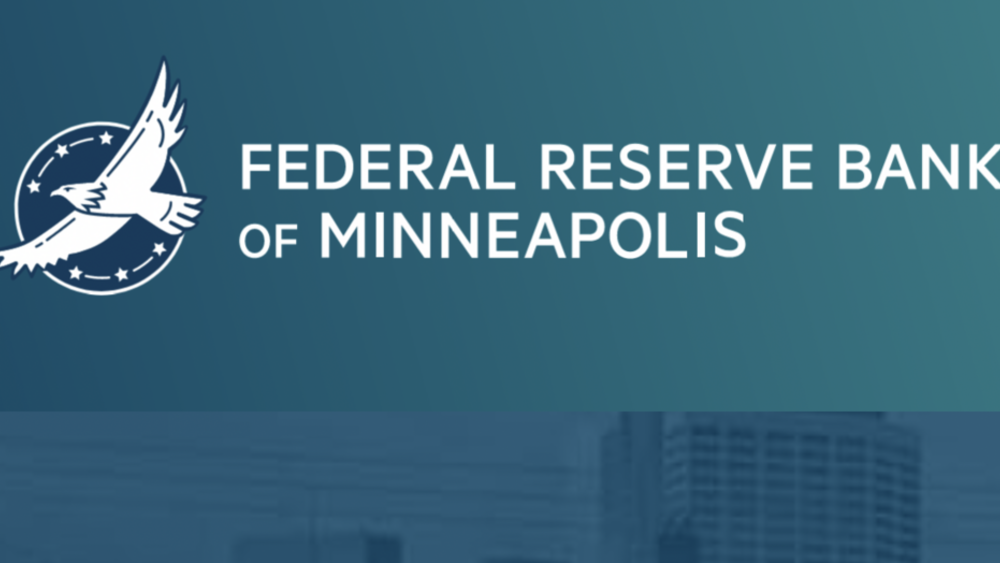
Tribal Leaders Handbook on Homeownership
As Native populations grow rapidly, tribal leaders are challenged as never before to provide their members decent housing. Expanding homeownership is a huge part of the solution for reservations and Indian areas, but until recently lenders just didn't extend home loans in Indian Country. The …
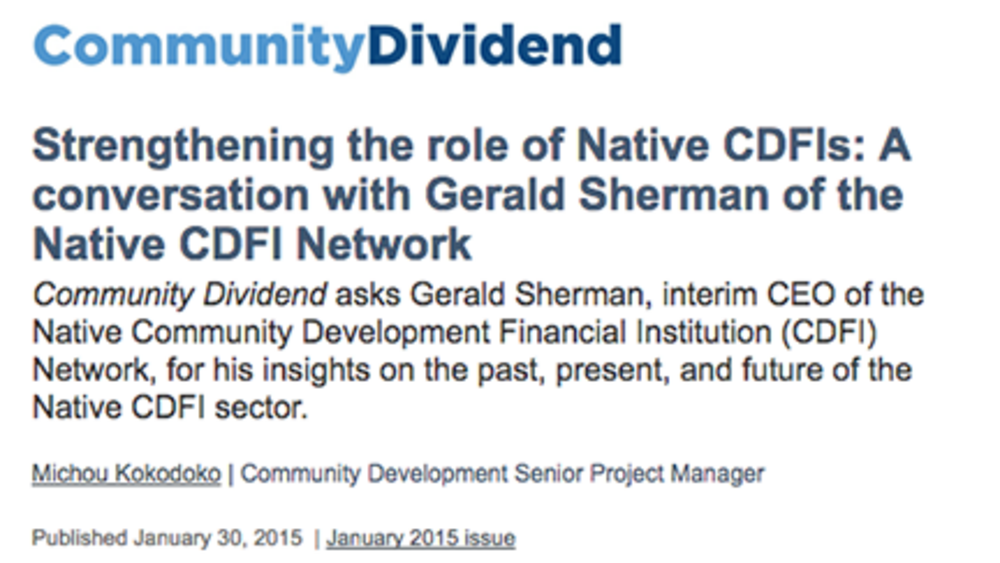
Strengthening the role of Native CDFIs: A conversation with Gerald Sherman of the Native CDFI Network
Roughly 8 percent of the 917 community development financial institutions (CDFIs) in the U.S. are categorized as Native CDFIs (NCDFIs), which means they serve primarily American Indian, Alaska Native, or Native Hawaiian communities. Due to a mixture of historical, political, and geographical…
